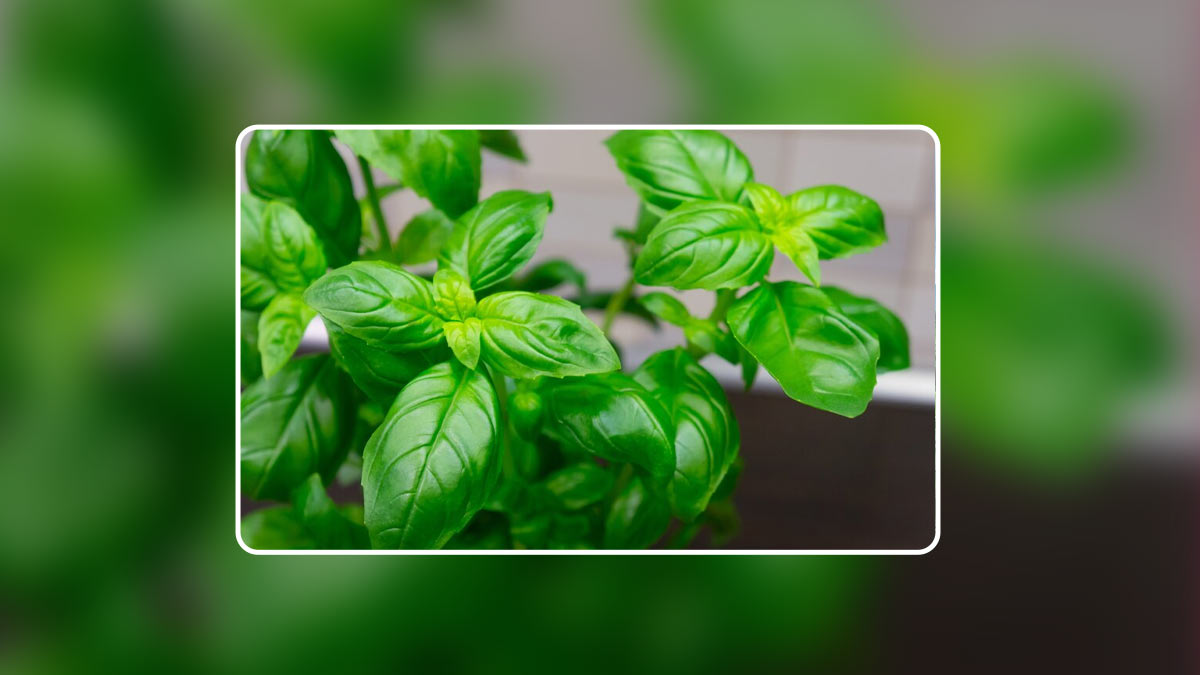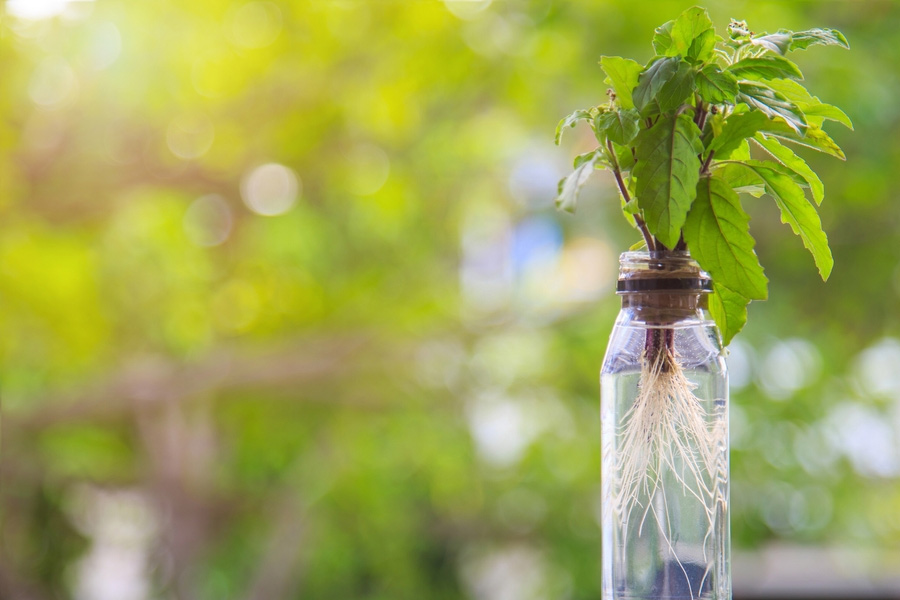
You can sprinkle it on salads, add it to pizza as a garnish, use it to top pasta, create pesto, infuse it into Bloody Marys, or even prepare sweet basil soup. No matter how you choose to use freshly harvested basil, it's a versatile herb with numerous benefits. It's also a valuable addition to gardens since basil naturally repels insects such as flies and mosquitoes. Clearly, there are many advantages to having fresh basil available. If you're keen on growing basil at home, here's a successful method using a bottle.
Here are the supplies needed for growing basil in a bottle:

These supplies will help you create a suitable environment for growing healthy basil plants in a bottle or container at home.
1. Prepare the Container:
Ensure the container is clean and has adequate drainage. If using a bottle, clean it thoroughly and remove any labels or residues. If the bottle lacks drainage holes, add a layer of small stones or gravel to improve drainage at the bottom.
2. Fill with Potting Mix:
Fill the container with the potting mix, leaving about an inch of space below the rim. Gently press down to remove air pockets.
Don't Miss: How To Grow Money Plant In A Water Bottle: A Step-By-Step Guide
3. Planting Basil:
From Seeds:
From Seedlings:
4. Watering:
Water the basil plant immediately after planting and regularly to moisten the soil. Water when the top inch of soil feels dry to the touch.
Avoid overwatering, as basil is susceptible to root rot in waterlogged conditions.
5. Sunlight and Location:
Place the container in a sunny location where the basil will receive full sun for most of the day. A south-facing window or a sunny balcony is ideal.
Rotate the container occasionally to ensure even sunlight exposure on all sides of the plant.

6. Maintenance:
Monitoring Soil Moisture: Check the soil moisture regularly and adjust watering as needed. Basil prefers slightly dry conditions between waterings.
Pruning and Harvesting: Pinch off the top leaves regularly to encourage bushy growth and prevent flowering. Use scissors or pruners to harvest individual leaves or stems for culinary use.
Don't Miss: How To Grow Coriander In A Water Bottle: A Step-By-Step Guide
Pest Control: Monitor the plant for pests like aphids or spider mites. Use natural remedies or insecticidal soap if pests are present, avoiding harsh chemical treatments.
7. Fertilisation (Optional):
If using fertiliser, apply a balanced liquid or granular fertiliser formulated for herbs once a month during the growing season. Follow the manufacturer's instructions for dilution and application rates.
8. Harvesting and Using Basil:
By following these detailed steps, you can successfully grow basil in a bottle or container at home, enjoying fresh and flavourful basil leaves for your culinary endeavours throughout the growing season.
Keep reading Herzindagi for more such stories.
Credits: Freepik
Also watch this video
Herzindagi video
Our aim is to provide accurate, safe and expert verified information through our articles and social media handles. The remedies, advice and tips mentioned here are for general information only. Please consult your expert before trying any kind of health, beauty, life hacks or astrology related tips. For any feedback or complaint, contact us at compliant_gro@jagrannewmedia.com.